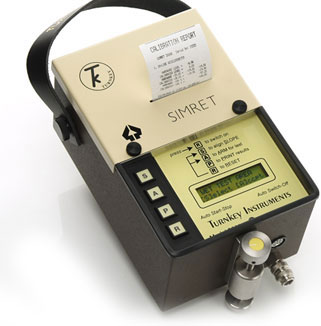Product Details
Our first product was the Simret 3000, an off-road brake tester developed with the Health and Safety Executive (HSE). It quickly became the standard for instrumented brake testing in the UK and is still widely used today, over twenty years later, in the UK and overseas.
Our brake testers are straightforward to use. Results are stored and, depending on the device, can be printed directly at the touch of a button. Results can also be downloaded to a computer for collating and printing or to a mobile device if preferred. Our range of options allows you to select the device, software, or accessories that meet your specific requirements.
The Simret 3000 can be used in various conditions and environments because it delivers accurate results regardless of ground conditions, vehicle speed, or gradient. This has led to its wide use globally in mines, quarries, and rail traction environments.
A foot pad is strapped to the brake pedal, and the user-friendly controls can be used to set the vehicle ID.
The test results are displayed on the backlit LCD screen. If a printed version is required, the vehicle driver can instantly print it, giving immediate hard copy evidence for the specific test. All tests are time-stamped.
Up to 50 brake tests can be stored in the Simret 3000’s memory, and test results can also be transferred to your computer for reporting, storing and analysis using our WinSim software.
The Simret 3000 comes as a complete ready-to-use kit and includes a leather case for the tester and all its accompanying accessories.
We recommend that the Simret 3000 be recalibrated once yearly or earlier if the instrument self-test warns of a calibration fault.





